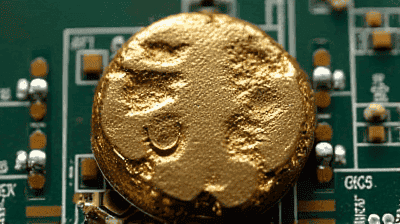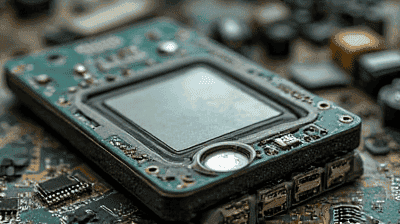
In the modern world, our dependence on electronic devices is immeasurable. From smartphones and laptops to household appliances and industrial machinery, technology is deeply woven into the fabric of our daily lives. However, with the rapid advancement of electronics comes a growing problem: electronic waste, or e-waste. As millions of tons of discarded electronic devices accumulate each year, a new field of practice known as urban mining has emerged. This innovative method recovers valuable metals such as gold, silver, and rare earth elements from e-waste, promoting sustainability and resource conservation.
Electronic waste refers to any discarded electrical or electronic device that is no longer in use. E-waste encompasses a wide variety of items, including:
The U.S. Environmental Protection Agency (EPA) estimates that e-waste accounts for a significant proportion of the municipal waste stream, often containing hazardous materials that pose environmental risks if improperly disposed of.
E-waste is comprised of various materials, including plastics, glass, and metals. Its components vary significantly depending on the type of device and manufacturer. Some of the key materials include:
The presence of both valuable and hazardous materials underscores the importance of responsible e-waste recycling.

Urban mining is the process of reclaiming valuable metals and materials from waste streams, particularly electronic waste. This practice is often contrasted with traditional mining, which involves extracting raw materials from the Earth. Urban mining aims to recover resources that have already been mined and processed, thereby reducing the need for new extraction and minimizing environmental impacts.
The urban mining process typically involves several steps:
Collection: E-waste is collected from various sources, including recycling centers, donation programs, consumer drop-off events, and take-back programs from retailers.
Sorting and Disassembly: Collected e-waste is sorted by material type, and devices are dismantled to separate components. This step is critical for identifying items with valuable metals.
Material Recovery: Specialized techniques are used to extract precious and rare metals from the sorted e-waste. This may involve physical processes such as shredding and sieving, as well as chemical methods like hydrometallurgy.
Processing and Refining: Recovered metals undergo further processing to purify them and make them suitable for reuse in manufacturing.
Reintegration: The refined metals are reintegrated into the supply chain, where they can be used to manufacture new electronics and reduce the need for virgin materials.
Urban mining employs various technologies to facilitate the recovery of valuable metals:
Mechanical Separation: This includes shredding and crushing e-waste to liberate metals from non-metal parts. Vibratory screens and air classifiers can be utilized to separate different material types.
Hydrometallurgical Processes: These techniques use aqueous solutions to solubilize metals, allowing them to be extracted selectively. Common methods include cyanidation for gold and acid leaching for copper and other metals.
Pyrometallurgy: Involves heating e-waste to high temperatures to separate metals from other materials. This process can recover precious metals but may release harmful emissions if not managed properly.
Bioleaching: An emerging technology that utilizes microorganisms to extract metals from e-waste. Certain bacteria can metabolize minerals and release valuable metals in the process, offering a potentially eco-friendly alternative to traditional methods.
One of the primary advantages of urban mining is its potential for resource recovery. According to estimates, approximately 7% of the world's gold supply and 15% of its silver are contained in e-waste. By reclaiming these valuable metals, urban mining helps to:
Urban mining contributes to environmental sustainability by minimizing the impact of traditional mining operations. Key benefits include:
Urban mining can also generate economic benefits, such as:
As urban mining promotes the recycling of e-waste, it plays a crucial role in waste management:

Many countries have implemented robust e-waste recycling programs to address the growing challenge of electronic waste. Examples include:
European Union (EU): The EU introduced the Waste Electrical and Electronic Equipment (WEEE) Directive, which mandates the responsible collection and recycling of e-waste. This regulation promotes urban mining practices across member states by encouraging the recovery of valuable materials.
United States: Various states have enacted e-waste recycling laws that require manufacturers to establish take-back programs and ensure proper recycling practices. States like California and Massachusetts have been pioneers in adopting stringent e-waste management policies.
A wave of innovative startups focused on urban mining and e-waste recycling has emerged in recent years. These companies utilize cutting-edge technologies to recover valuable materials from discarded electronics. Examples include:
Greenwave Systems: This company employs advanced recycling technologies to extract metals and components from electronics while ensuring environmental sustainability.
Sims Recycling Solutions: Operating globally, Sims specializes in the recycling of e-waste, focusing on recovery and responsible disposal practices.
Many tech companies are taking significant steps to incorporate urban mining into their business strategies. For instance:
Apple: The tech giant has introduced a closed-loop recycling program to recover materials from old devices. The program aims to make products using only recycled or renewable materials, reducing the need for mining virgin resources.
Dell: Dell has launched initiatives to recover electronic waste and promote sustainability, offering programs that allow customers to return old electronics for responsible recycling.
While urban mining presents numerous benefits, it is not without challenges:
The economic feasibility of urban mining can be affected by several factors:
Recovery technologies are continually evolving but may still face limitations:
Despite growing awareness of e-waste issues, many consumers remain uninformed about proper disposal and recycling practices. Building public awareness is critical to ensuring responsible e-waste recycling and promoting urban mining initiatives.

To support urban mining and ensure responsible e-waste recycling, consumers can take several proactive steps:
Many retailers and manufacturers offer take-back programs that allow consumers to return old electronics for responsible recycling. By utilizing these services, you can ensure your e-waste is handled properly.
Staying informed about e-waste issues can help you make responsible choices. Share information with friends and family about the importance of proper recycling practices and the role of urban mining.
Choose electronics manufacturers that prioritize sustainability and have established responsible recycling programs. By supporting these companies, you encourage the industry to adopt sustainable practices and invest in urban mining.
Instead of discarding malfunctioning electronics, consider repairing them when possible. Extending the life of your devices reduces e-waste generation and supports a more sustainable consumption model.
Urban mining is poised to play a vital role in addressing the growing challenges of electronic waste. By recovering valuable metals such as gold, silver, and rare earth elements from discarded electronics, urban mining fosters resource conservation and sustainability. While challenges remain, the ongoing development of technologies and practices to facilitate urban mining presents a promising path toward a circular economy.
By actively participating in responsible e-waste recycling and supporting urban mining initiatives, individuals can contribute to a cleaner environment and a sustainable future.